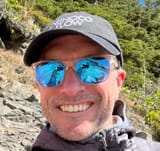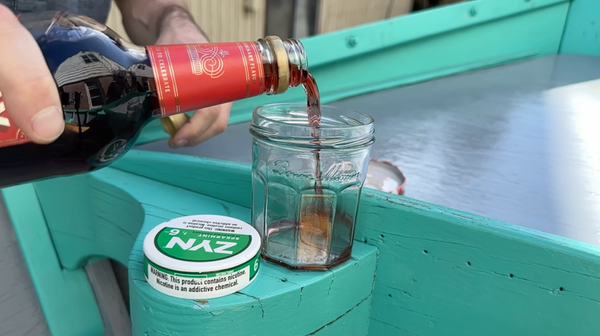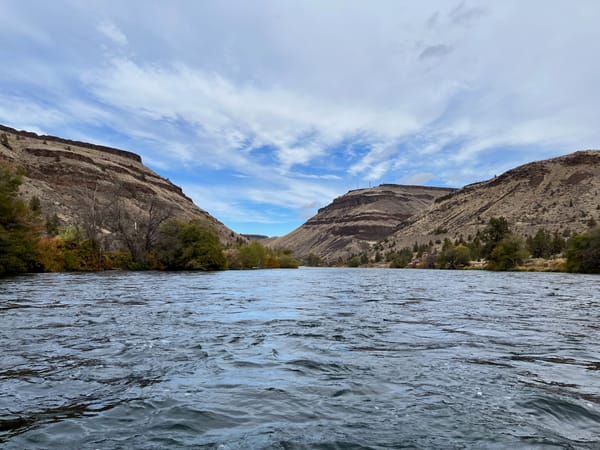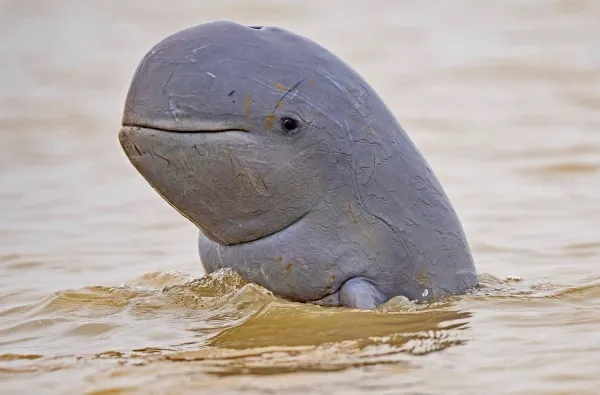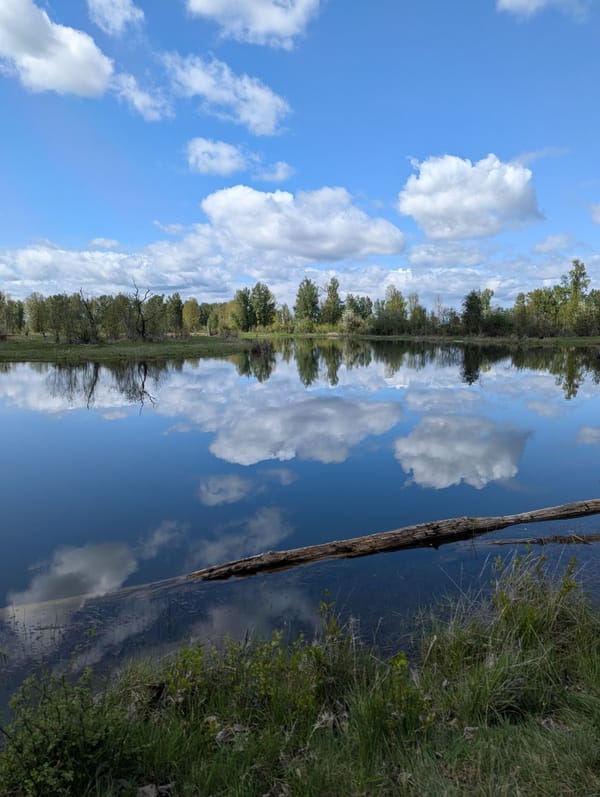Finding your Home Waters with the Big Here Quiz
Start your journey to find your home waters by grounding yourself on your home planet.

If two fly anglers meet in a strange fishy corner of the planet, one question will invariably be asked:
What are your home waters?
I may have already asked you. It's a question I ask in my introductory notes to new CFS members, and in our classroom introductions.
It's a question that established our most popular Freshwater Trust T-shirt design. And, it's a question I'd like you to try and come up with an answer to, through your angling practice, or just in life.
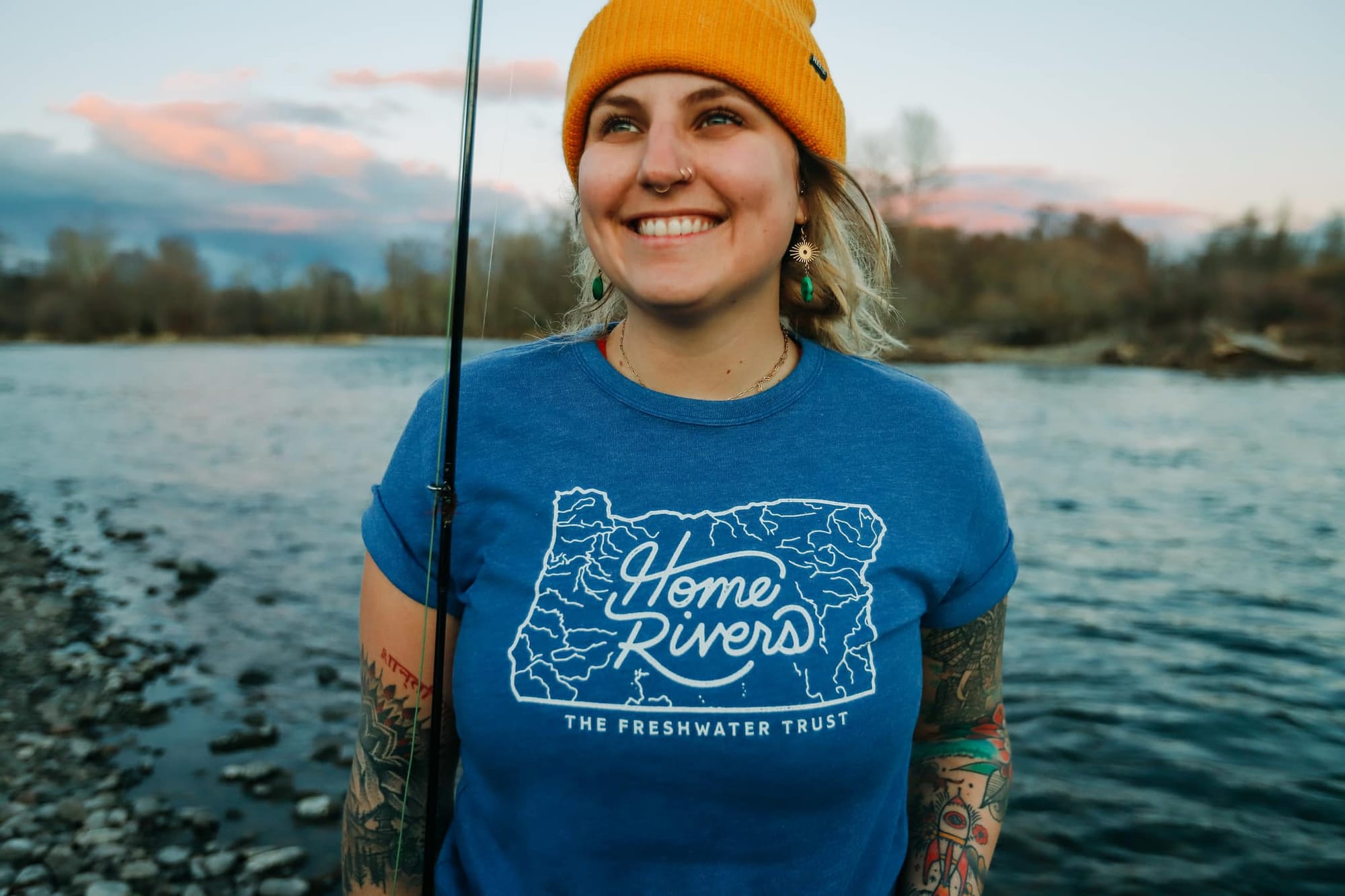
Exploring from your couch
If you aren't sure about your home waters yet, don't fret. This isn't something you have to have fished for decades to establish. But, it does require a little bit of getting-to-know-you, specifically getting to know where you are on the planet.
Yes, one part of finding your home waters where you're building your angling practice requires fishing. And maybe even auditioning between a few possible home waters to see which one you like good enough to adopt.
Here's one thing that's cool: Your home waters doesn't have to be the closest one, just the one you like fishing, and being around, most.
But, we can do a significant amount of finding out just by thinking about where we live, and relating to some of the critical natural and infrastructural processes that keep things going, civilization and natural-resources wise.
A divining rod for finding home waters
One tool we use to help us on this quest came to me courtesy technologist and thinker Kevin Kelly. Kevin has built a compendium of what he calls "Cool Tools" over the past several decades. He's got a book of the same name tat's worth tracking down. His tool of choice when it comes to finding your place in the world is The Big Here Quiz, something he adapted with some help based on the work of a naturalist named Peter Warshall. Here's what Kevin writes:
You live in the big here. Wherever you live, your tiny spot is deeply intertwined within a larger place, imbedded fractal-like into a whole system called a watershed, which is itself integrated with other watersheds into a tightly interdependent biome. At the ultimate level, your home is a cell in an organism called a planet. All these levels interconnect. What do you know about the dynamics of this larger system around you? Most of us are ignorant of this matrix. But it is the biggest interactive game there is. Hacking it is both fun and vital.
Here's the quiz, as Kevin writes, "30 questions to elevate your awareness (and literacy) of the greater place in which you live"
Members can find my guesses at the answers, for where I live (about a mile from the Columbia River, in its drainage, in the Cascadia bioregion, of the North Pacific Rim of the Pacific Basin of Planet Earth) and the more-thoroughly-researched corrections below.
- Point north.
- What time is sunset today?
- Trace the water you drink from rainfall to your tap.
- When you flush, where do the solids go? What happens to the waste water?
- How many feet (meters) above sea level are you?
- What spring wildflower is consistently among the first to bloom here?
- How far do you have to travel before you reach a different watershed? Can you draw the boundaries of yours?
- Is the soil under your feet, more clay, sand, rock or silt?
- Before your tribe lived here, what did the previous inhabitants eat and how did they sustain themselves?
- Name five native edible plants in your neighborhood and the season(s) they are available.
- From what direction do storms generally come?
- Where does your garbage go?
- How many people live in your watershed?
- Who uses the paper/plastic you recycle from your neighborhood?
- Point to where the sun sets on the equinox. How about sunrise on the summer solstice?
- Where is the nearest earthquake fault? When did it last move?
- Right here, where you are, how deep do you have to drill before you reach water?
- Which (if any) geological features in your watershed are, or were, especially respected by your community, or considered sacred, now or in the past?
- How many days is the growing season here (from frost to frost)?
- Name five birds that live here. Which are migratory and which stay put?
- What was the total rainfall here last year?
- Where does the pollution in your air come from?
- If you live near the ocean, when is high tide today?
- What primary geological processes or events shaped the land here?
- Name three wild species that were not found here 500 years ago. Name one exotic species that has appeared in the last 5 years.
- What minerals are found in the ground here that are (or were) economically valuable?
- Where does your electric power come from and how is it generated?
- After the rain runs off your roof, where does it go?
- Where is the nearest wilderness? When was the last time a fire burned through it?
- How many days till the moon is full?
The Bigger Here Bonus Questions:
- What species once found here are known to have gone extinct?
- What other cities or landscape features on the planet share your latitude?
- What was the dominant land cover plant here 10,000 years ago?
- Name two places on different continents that have similar sunshine/rainfall/wind and temperature patterns to here.
The Big Here Quiz answers for my home waters:
Answers for Portland, Oregon
Guesses and corrected answers.
- Easy. North is the direction the moss faces.
- Sun sets here at approximately 4:30pm on Friday, November 15, 2024
Well, actually:
16:40 Sunset
17:12 End of civil twilight
17:48 End of nautical twilight
18:23 End of astronomical twilight - Snow on Mt. Hood and water in the creeks from it fills the Bull Run Run Reservoir, and is piped directly into the city.
Oversimplified, but correct. Here's a better model. - The waste water drains to the Columbia, which goes to the Pacific ocean. The solids are disposed of in treatment plants in North Portland.
Not bad! the Columbia Boulevard Wastewater Treatment Plant in North Portland. - Uh, we're at an elevation of maybe 120 feet?
253 ft - The first sign of spring is always the trillium!
- There are a bunch of little watersheds that drain the coast range, so that's probably the next one over from the Willamette watershed we're in now.
Technically correct, but not specific enough. The North Coast watershed is probably the best answer. Here's a look at the state of Oregon's administrative regions, and here's an even better look at the Watershed Councils, a unique feature of Oregon that does an enormous amount of advocacy for our rivers. - The substrate here is mostly clay and rock. Steve Solomon's excellent Growing Vegetables West of the Cascades details a lot about the soil around here, and how leached it is by all the rain.
- Early groups in this area were mostly "salmon people" and subsisted on seasonally harvested and stored salmon, as well as other wild game and the great quantities of edible plants, roots, tubers, and whatnot.
OK answer. More on local diets here. - We have lots of edible plants to choose from:
1. Wild ginger: year round ✅
2. Salmonberries: summer/fall ✅
3. Camas bulbs: early summer ✅
4. Sorrel: year round? ✅
5. Cattails: fall ✅ - Our storms come from the west / north-west. When anything comes from the East here you know stuff's going sideways.
- Our garbage is sorted then compacted into a landfill, which I think is out near the Dalles?
Arlington, Oregon, actually. This neat page from Metro shows the trash journey. - If you count the entire Willamette Valley, maybe 1.5 million people live here?
Wrong! By half! 3 million. - I think most of the paper/plastic we recycle from our neighborhood goes to China.
Probably incorrect. But incredibly difficult to tell what goes where. I thought my smart friend Rick would have solved this by now. - Learning where the equinoxes were became pretty second nature when I was scrutinizing our solar panel production in the first years we had the equipment.
- The nearest earthquake fault is the largest also, the Cascadia fault, offshore at the coast. It's been too long since it last moved significantly so many are worried about the aftermath of a big quake. We get a lot of tremors from St. Helens and Hood and the other volcanoes nearby.
Wrong! Cascadia may be the biggest, but it is not the closest. The Gales Creek and Portland Hills faults are way closer. "The Gales Creek and Portland Hills Faults run uncomfortably close to the Portland urban area and may have produced earthquakes in the magnitude 5-6 range over the last few thousand years." - I would reckon we'd have to drill a good 100 feet down to reach water.
Wrong again! Even though we're at 250 feet or so above sea level, it's only about 35 feet to groundwater, according to this tool from the US Geologic Survey. - Wyeast (Mt. Hood), Celilo falls, and Willamette falls are three geological features in our watershed which are, or were, especially respected by your community, or considered sacred, now or in the past.
- The growing season here (from frost to frost) goes, I'd guess, from around May 15, and our first frost is in early December.
"On average, the last occurrence of 32 degrees in the spring is March 30th, while the first of the fall occurs around November 8th. First frost of fall is often in late October, while the last frost of spring does not occur until mid to late April. This makes for a long growing season." - Five birds that live here year-round are:
Pacific wren
Anna's hummingbird
Red-tailed hawk
Barn owl
Northern flicker - I'd guess we had around 120 inches of rain last year.
I think it just feels like 100+ inches. On average, Portland receives between 36 to 43 inches of rain per year, which isn't even enough to rank it among the top 15 wettest cities in the United States. - Pollution in our air comes from comes from temperature inversions trapping human combustion stuff, like car exhaust, woodsmoke from fireplaces, and various industrial processes.
- High tide was probably around 9 this morning (we're nearing king tides on the coast, which are very cool)
Wrong; morning high was 2.1 feet at 4:46am; evening high was 4 feet at 4:48pm (at the downtown station) - The primary geological processes or events that shaped the land here have been the ring of fire, Missoula floods, continued volcanic activity in the Cascade range.
Not bad! The ring has been ringing for the last 35m years, the Missoula floods were last 13,000 years ago, and we've gotten one or two Cascade volcano eruptions per century over the last 4,000 years. - Three wild species that were not found here 500 years ago are the brown trout, himalayan blackberry, and smallmouth bass. Quagga / zebra mussels are one exotic species that has appeared in the last 5 years. They're muy malo.
- I don't hear much about mining in Oregon so I don't think there have been many minerals found in the ground here that are (or were) economically valuable. I think most of the extractive industries in the history of Oregon have centered on two main natural resources: timber and fish.
- Our electric power comes from the sun, and is generated on my roof. And, at night, it comes from Pacific Power's mix, most likely hydro or gas peaker plants out near the river.
- After the rain runs off our roof, it goes into the gutters and then onto my yard, where it percolates down into the groundwater. The city has incentivized people to no longer send roof runoff through the storm drain and into the Willamette river by offering a discount on our huge water bills.
- The closest Big W Wilderness to me is probably the Mount Hood National Forest. Big enough to see a cougar in, or get lost and never come back. It has fires every year, but the last really big scary ones were 2020 and 2018.
- It's a full moon tonight! Great timing.
The Bigger Here Bonus Questions:
31. Species once found here are known to have gone extinct, hmm. Does the megafauna version of the Columbia salmon count? Or the more recent wild "B"-run Clearwater fish?
32. Other cities or landscape features on the planet that share Oregon's latitude, hmm, well. Scotland? Estonia? This is a tough one.
Turns out: Much of Europe! Here's a fun visualization of different cities on similar latitudes. And a great slider. Milan and Venice!
33. What was the dominant land cover plant here 10,000 years ago, maybe ferns?
Wrong! Today I learned the term "archaic period," the timespan in North American Kevin seems to be trying to get at with this question. I think much of this area was known as Oak Savannah, lots of grasslands. The Oregon Historical Society has a great article on the archaic period in this area.
34. Two places on different continents that have similar sunshine/rainfall/wind and temperature patterns to here, hmm. Ireland?
Nope. This is a cool little project looking at climate sister cities. Portland's temperature analog is Istanbul, Turkey! One other funny observation doing this research, there are a lot of relocation-company-related SEO pages capturing queries about weather and climate. For if you want to relocate, and are looking to understand the weather somewhere.
